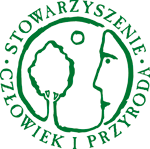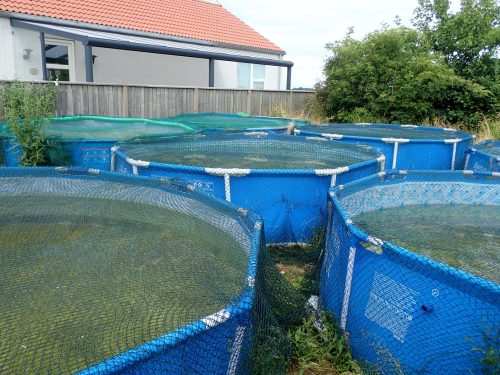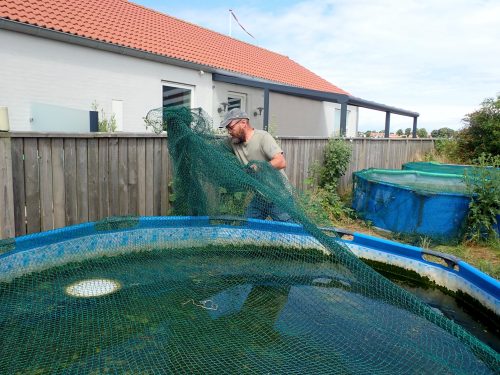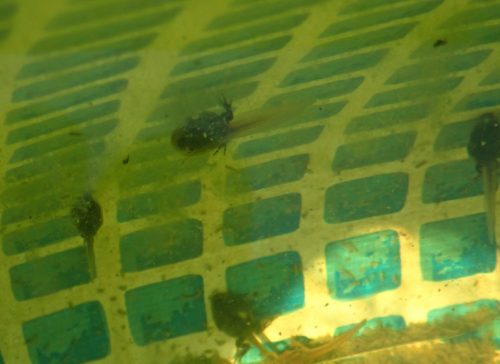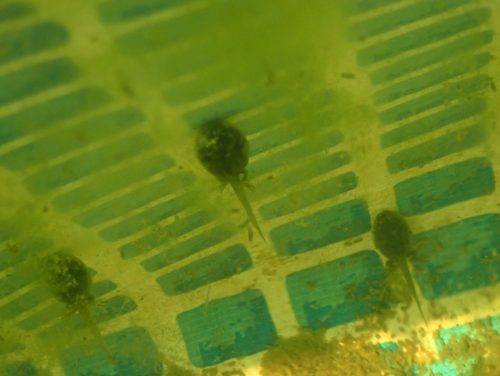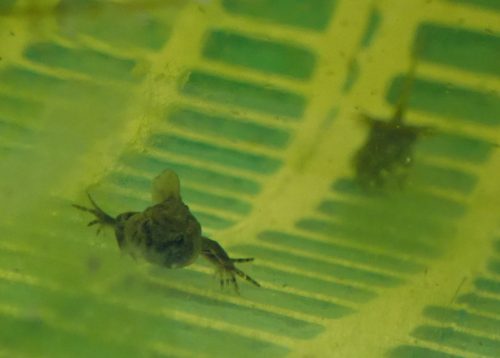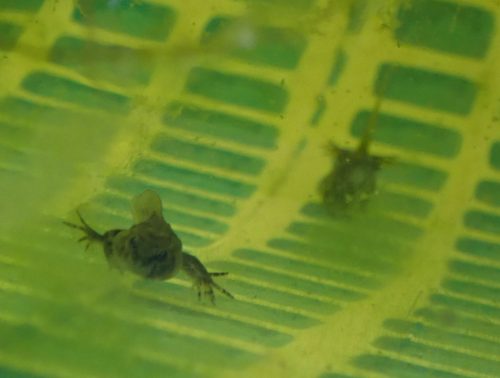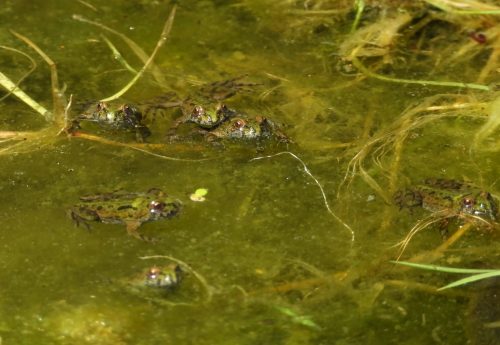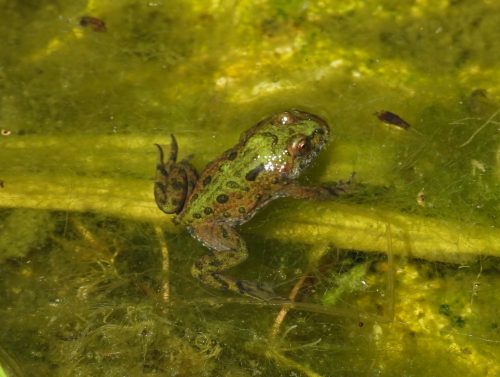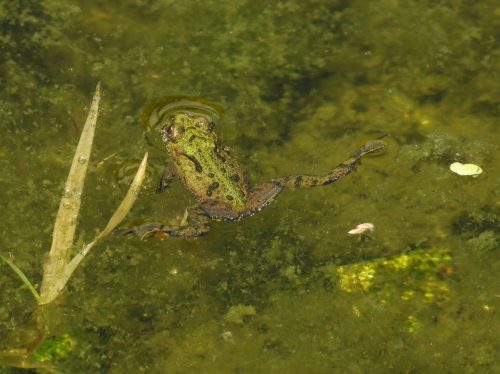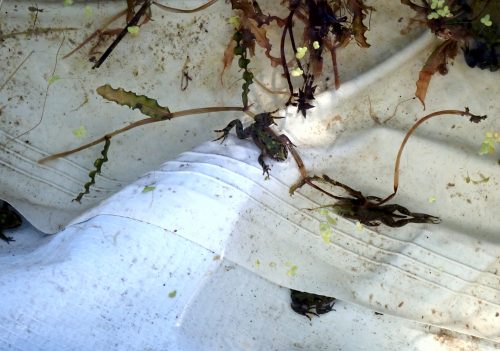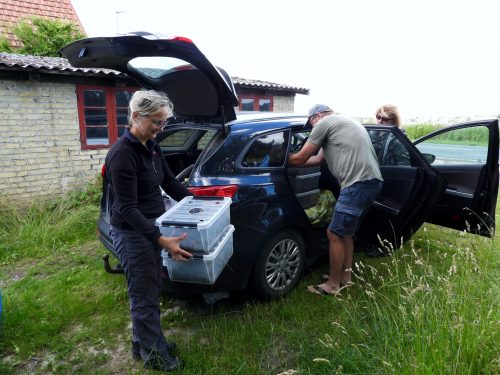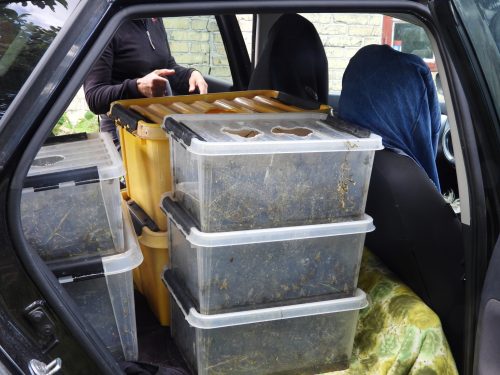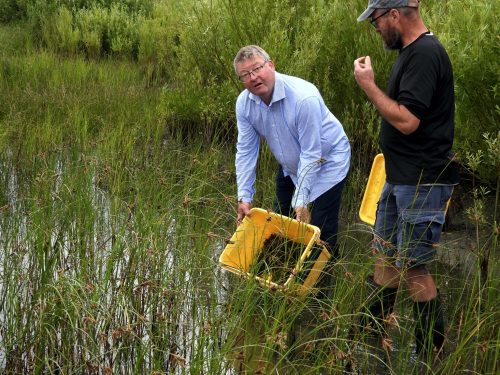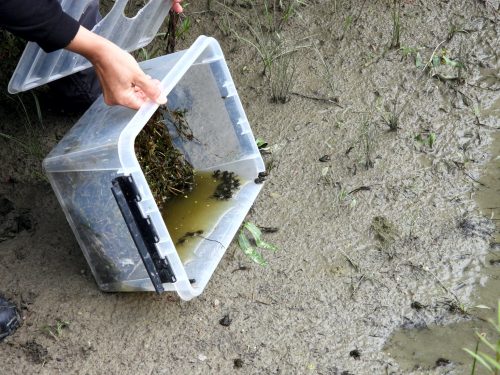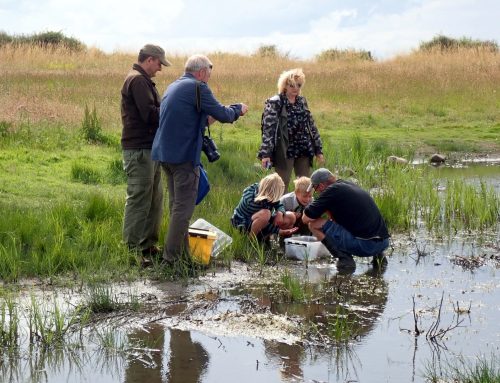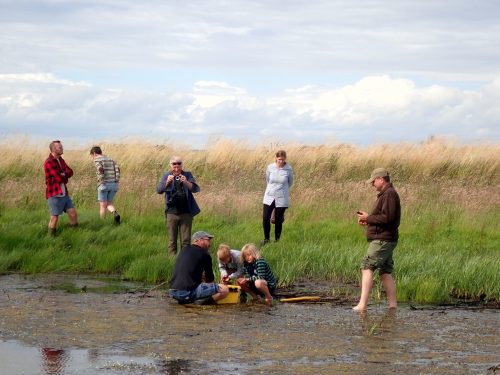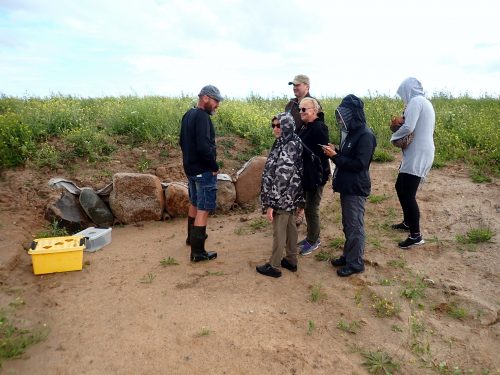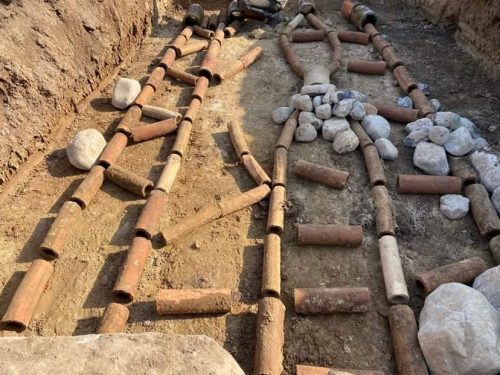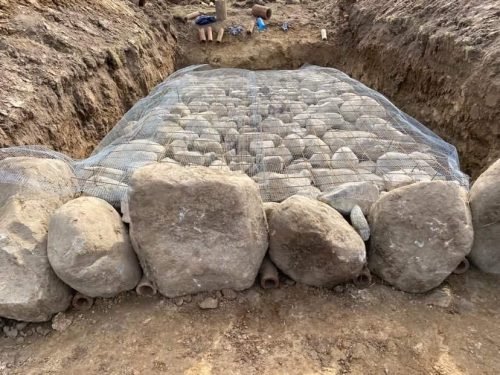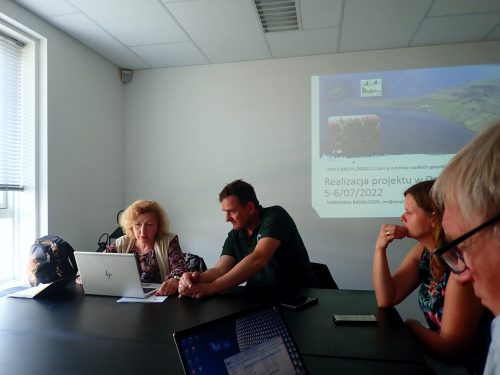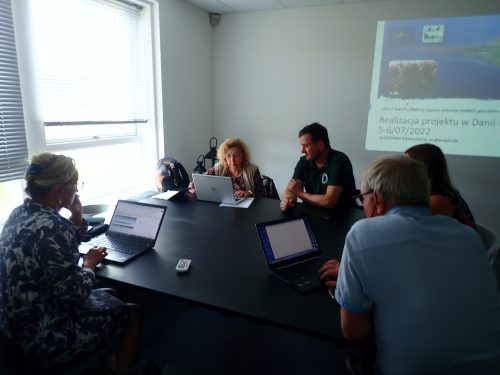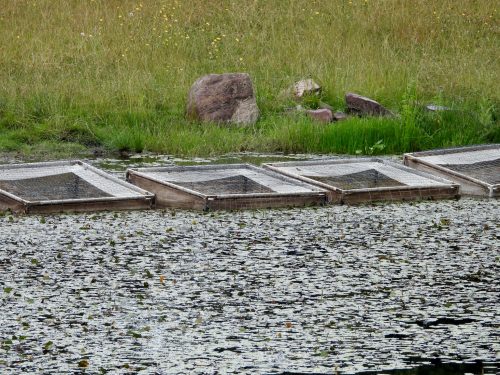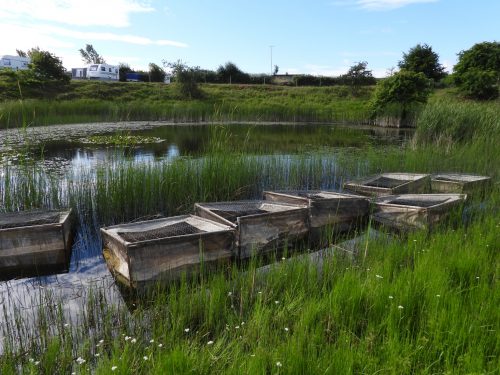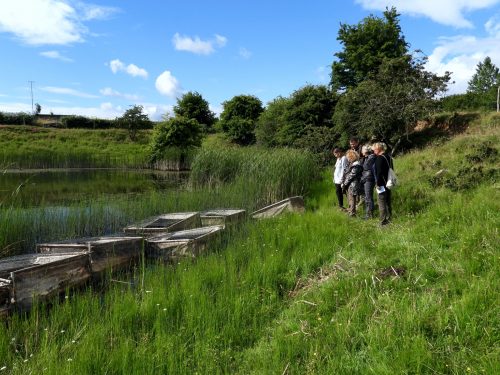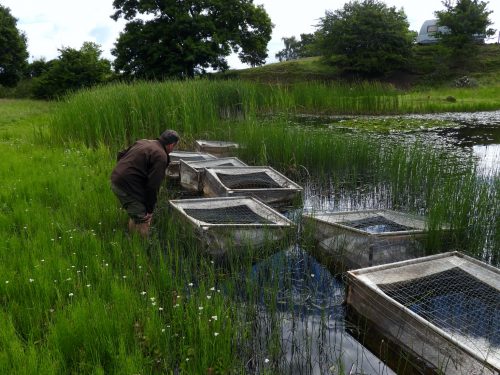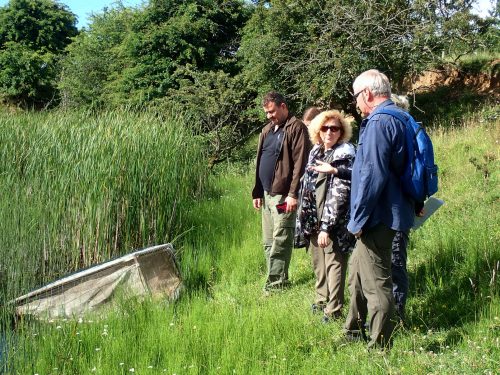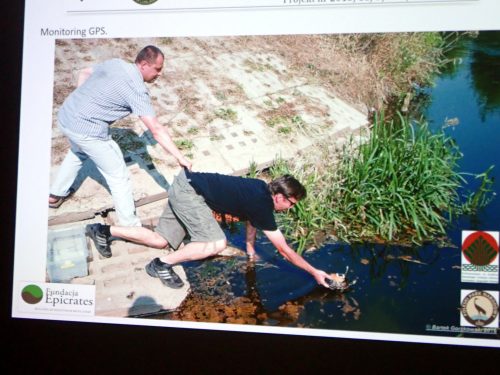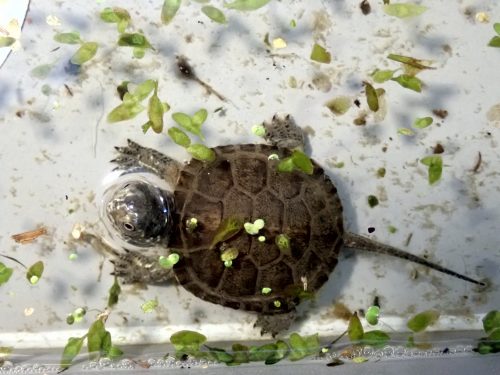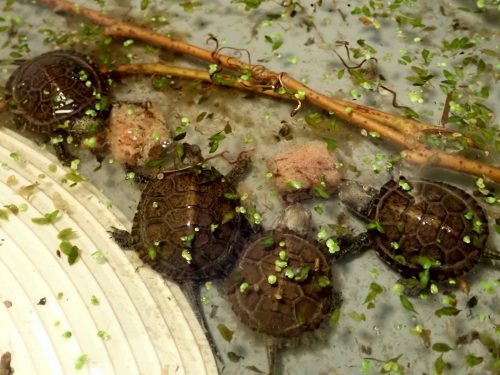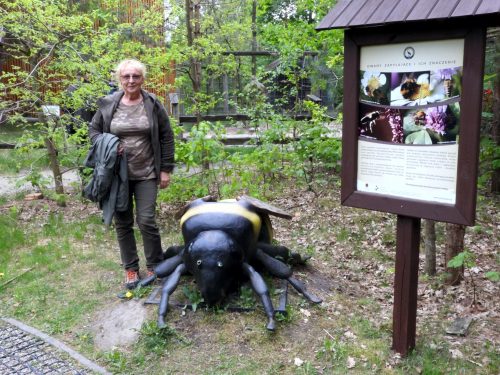Study visit to Denmark
At the beginning of July, three members of the "Man and Nature" Association, accompanied by Jaromir Krajewski - Project Manager LIFE17NAT / PL / 000011, visited our co-beneficiaries from Denmark, Amphi International. The main purpose of the trip was to meet the external monitor of the project, Ms Marta Kaczyńska, and at the same time to learn about the achievements of our Danish friends in the implementation of a joint project.
The main activity carried out in Denmark is the restoration of the population of the fire-bellied toad Bombina bombina on Skarø Island. Young toads are put into reconstructed or built water reservoirs. In order to increase the survival rate of the young toad's development, the freshly deposited spawn from populations living on other islands in spring is taken to a breeding station, where they hatch. The tadpoles are then reared in appropriate tanks. Initially, these are large litter boxes, and later on much larger pools. Fire-bellied tadpoles feed on algae in the initial period of their development, so it is enough to put in the appropriate number of plants transferred from natural ponds. Algae multiply quickly, grow on the walls of the reservoir and provide a sufficient food base for tadpoles. Later on, young toads need to be fed with small invertebrates. The most readily available food are bloodworm larvae (a popular food for aquarium fish), you can also place aquatic plants in tanks with young toads, taken from ponds, where a lot of different aquatic invertebrates are always "washed". When the young toads, after transformation, reach the optimal size, they are transported to water reservoirs, where they begin their independent life.
As part of one of the tasks of the project, the Danish partners planned the construction of winter quarters for fire-bellies using a method different than that used in Poland, which largely resulted from different climatic conditions, topography and land cover. At the beginning, instead of a few small winter quarters, one large (about 20 m2) was built, with entrances only on one side. The rest of the structure cuts into the slope. We are now looking forward to the effects of this action.
During the meeting, individual project beneficiaries presented the progress in the implementation of activities, and then answered Ms Monitor's questions. We were pleased to say that the project is progressing as planned, except for slight shifts due to the COVID-19 epidemic.
During our stay in Denmark, we exchanged experiences with representatives of another project on the protection of amphibians, implemented under the LIFE program - AMPHIbian CONservation and Habitat Restoration (LIFE18 NAT / SI / 000711). We watched with great interest their other, alternative method of breeding the fire-bellied toad, using specially adapted cages, located on the shore of water reservoirs. The other co-beneficiaries of this project are protecting amphibians (Bombina variegata, Triturus carnifex, Triturus cristatus, Rana arvalis and Hyla arborea) in Germany and Slovenia.
Photographs by Anna and Lech Krzysztofiak
Conference in Gołdap
On May 19-20, 2022, a conference was held in Gołdap. "Romincka Forest - Something Beautiful" („Puszcza Romincka – coś pięknEGO”) which is a summary of the project implemented by the Local Action Group "Leader w EGO" in partnership with the Romincka Forest Foundation and with the substantive support of the Romincka Forest Landscape Park.
The conference was attended by representatives of the Self-government of the Warmian-Masurian Voivodeship, the State Forests, self-government units from the Ełk, Gołdap and Olecki poviats, scientists, nature protection services, representatives of non-governmental organizations (including representatives of the "Man and Nature" Association, tourist information centers from the area of operation Association "Lider w EGO", as well as the inhabitants of this area.
The subject of the conference was devoted to issues related to the natural and tourist potential of the Romincka Forest, as well as the rational use of its resources. Promotion of a tourist and sightseeing map prepared for the area of the Romincka Forest Landscape Park, a photo album devoted to the Romincka Forest and a study visit to the headquarters of the Romincka Forest Landscape Park were part of the two-day meeting.
The conference, organized in partnership with the Romincka Foundation, as a proprietary operation of LAG "Leader w EGO", was co-financed by the European Union under Action 19 "Support for local development under the LEADER initiative", Sub-action 19.2 Support for the implementation of operations under the local development strategy managed by the community covered by RDP 2014-2020.

Photo 1. PKPR Director Jaromir Krajewski welcomed the conference participants and started the proceedings.
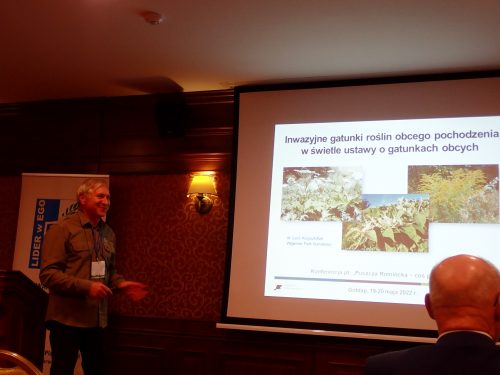
Photo 2. Among the many interesting papers, there was also the one entitled "Invasive plant species of foreign origin in the light of the law on alien species", delivered by Lech Krzysztofiak.

Photo 3. After the speeches, conference participants saw a relatively new facility built in Gołdap - brine graduation towers.
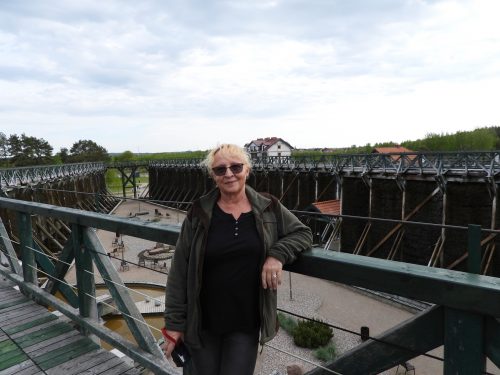
Photo 4. The facility makes a great impression, you can clearly feel a specific microclimate here, which has a great impact on our well-being.

Photo 5. On the second day of the conference, a lecture by prof. Stanisław Czachorowski, "Terrible, poisonous, poisonous - biological diversity of the Romincka Forest".
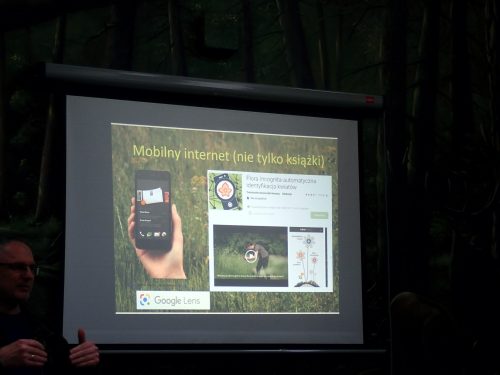
Photo 6. We learned, among other things, how to activate youth and adults in gaining knowledge, e.g. using applications for mobile devices.
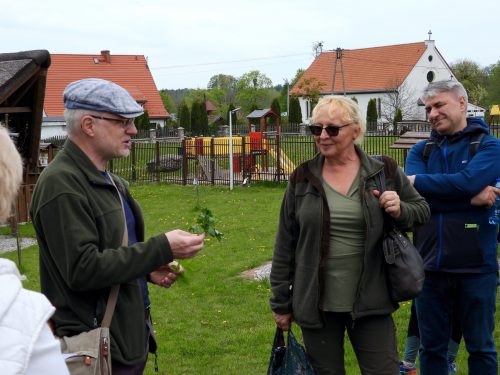
Photo 7. After the lecture, everyone took part in a field game, which was a continuation of the topic covered in the lecture.
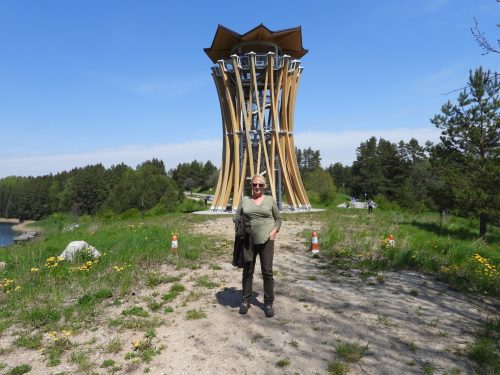
Photo 8. We also had the opportunity to learn about the newest tourist infrastructure of PKPR, such as the impressive observation tower with a panorama of Stańczyki.
Photographs by Anna and Lech Krzysztofiak
"Pond turtle - protection and threats" - workshop in Urszulin
On May 13-15, 2022, a workshop was held in Urszulin. "Pond turtle - protection and threats", in which participated, among other things, Anna Krzysztofiak, as a representative of the "Man and Nature"Association. This event was one of the activities carried out by the Poleski National Park as part of the project entitled "Ecological education and shaping pro-environmental behavior in the Poleski National Park", co-financed by the National Fund for Environmental Protection and Water Management.
During the workshop, a number of interesting papers were delivered on:
- water protection in terms of sustainable development and species protection in protected areas;
- the importance of European pond turtle protection for the development of protected areas;
- telemetry monitoring as an element of active protection of the European pond turtle;
- threats to the European pond turtle, especially from alien, invasive species of turtles;
- problems related to the trade and breeding of ornamental turtles.
Field sessions were also organized, enabling direct observation of activities carried out at the European pond turtle protection center, at the Educational and Museum Center of the Poleski National Park in Stary Załcz and at the Educational Center "Poleskie Sioło" in Wytyczno.
On the last day of the workshop, a trip along the Perehod nature trail was organized.
This event allowed us to learn about the methods of active protection of the European pond turtle used by the organizers, and at the same time it was an excellent opportunity to present the results and experiences that we gained during the implementation of the project "Active protection of endangered species of amphibians and reptiles in Natura 2000 areas in Europe" LIFE17 NAT / PL / 000011.

Photo 2. We learned how to attach the transmitters to the turtle's shell, which will enable remote sensing, ie remote tracking of its movements.

Photo 4. The presentation on the alien species of turtles in Poland was very impressive, especially the photos showing the largest and most dangerous of them, such as the lizard scorpion.
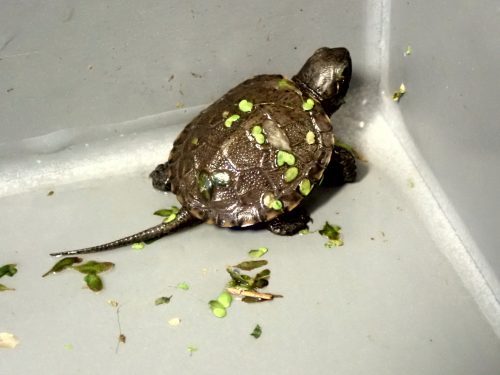
Photo 5. The employees of the Polesie National Park have for years been actively protecting the European pond turtle. on raising young turtles, which significantly increases their survival rate.

Photo 8. In the area of the Polesie National Park, an innovative hybrid hydrophyte wastewater treatment plant was built, designed in the shape of a turtle.
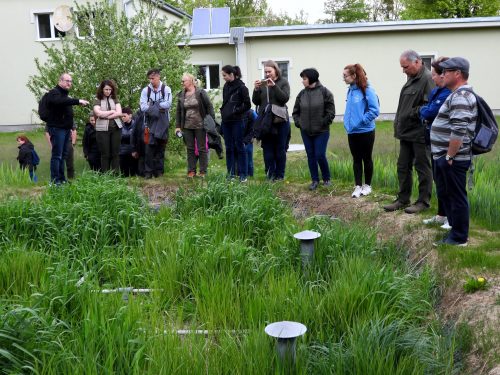
Photo 9. The sewage treatment plant is doing an excellent job of treating sewage from a nearby educational facility.
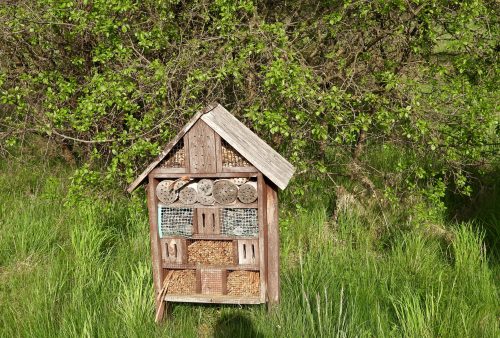
Photo 14. Special lodgings for bees and other pollinating insects are located both at the center and in the field.
Photographs by Anna and Lech Krzysztofiak
International conference "Nature protection beyond borders" in Gołdap
On April 26-29, 2022, the international conference "Nature protection beyond borders" was held in Gołdap, which was the inauguration of a new project of the Romincka Forest Foundation, Romincka Forest Landscape Park and the Norwegian Institute of Nature Research entitled "Active protection of endangered habitats and species in valuable natural areas of eastern Masuria".
The conference was attended by representatives of the Self-government of the Warmian-Masurian Voivodeship, RDOŚ in Olsztyn, NFOŚiGW in Warsaw, State Forests, local government units, universities, non-governmental organizations (including representatives of the "Man and Nature" Association), as well as project partners from Norway and naturalists from Ukraine. At the conference, experiences in the field of active protection, research and monitoring of nature conducted in Poland, Norway and Ukraine were discussed. As part of the conference, there was also a study trip around the Romincka Forest Landscape Park, which was an opportunity to present activities for the protection of nature carried out by the Park for many years.
The new project focuses on the protection of amphibians, bats and wetlands. Among others, water reservoirs and winter quarters for amphibians, winter shelters for bats will be renovated, and nesting boxes for these mammals will be hung. There will be nature workshops for foresters and employees of landscape parks, a film about amphibians and educational publications.
As the project activities started a few months ago, the first results are now ready. In the forest, a valve on the dystrophic lake has been reconstructed, which will prevent drainage of this valuable natural reservoir. A bat exhibition was also arranged in the basement at the seat of the Romincka Forest Landscape Park.
The project will be implemented until 2024. If you are interested in the activities, please follow the website of the project czynna-ochrona-mazury-wschodnie.pl and the fanpage on Facebook: @aktna.ochrona.mazury.wschodnie
The project was co-financed by the EEA Financial Mechanism 2014-2021 under the "Environment, Energy and Climate Change" Program.

Photo 2. Duncan Halley's lecture on Norwegian beavers allowed us to learn about the problems related to the protection of these mammals in Norway.

Photo 3. Many interesting technical solutions were included in Francesca Pilotto's speech on the restoration of lowland rivers.

Photo 4. The speech of a Norwegian herpetologist on wintering grounds created in Norway for newts aroused our special interest, because we carry out similar tasks.

Photo 5. Anna Krzysztofiak presented the main assumptions and results of the LIFE17NAT/PL/000011 project activities.
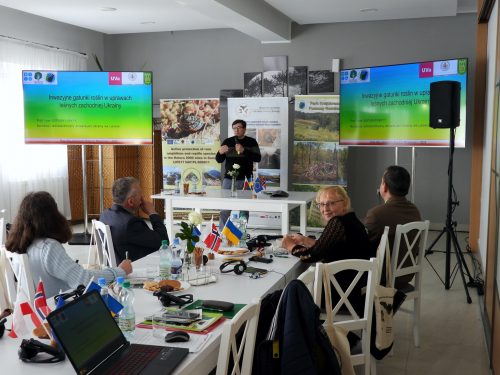
Photo 6. The conference was also attended by guests from Ukraine - Ivan Sopushynskyy told us a lot about the problem with invasive plant species in this country.

Photo 7. The conference was an opportunity to present publications produced as part of the LIFE17NAT / PL / 000011 project and several previous ones, devoted mainly to the protection of amphibians. All items enjoyed great interest.

Photo 8. As usual, the most interesting discussions took place "behind the scenes", for example during a walk to the brine graduation towers in Gołdap.
Photographs by Anna and Lech Krzysztofiak
